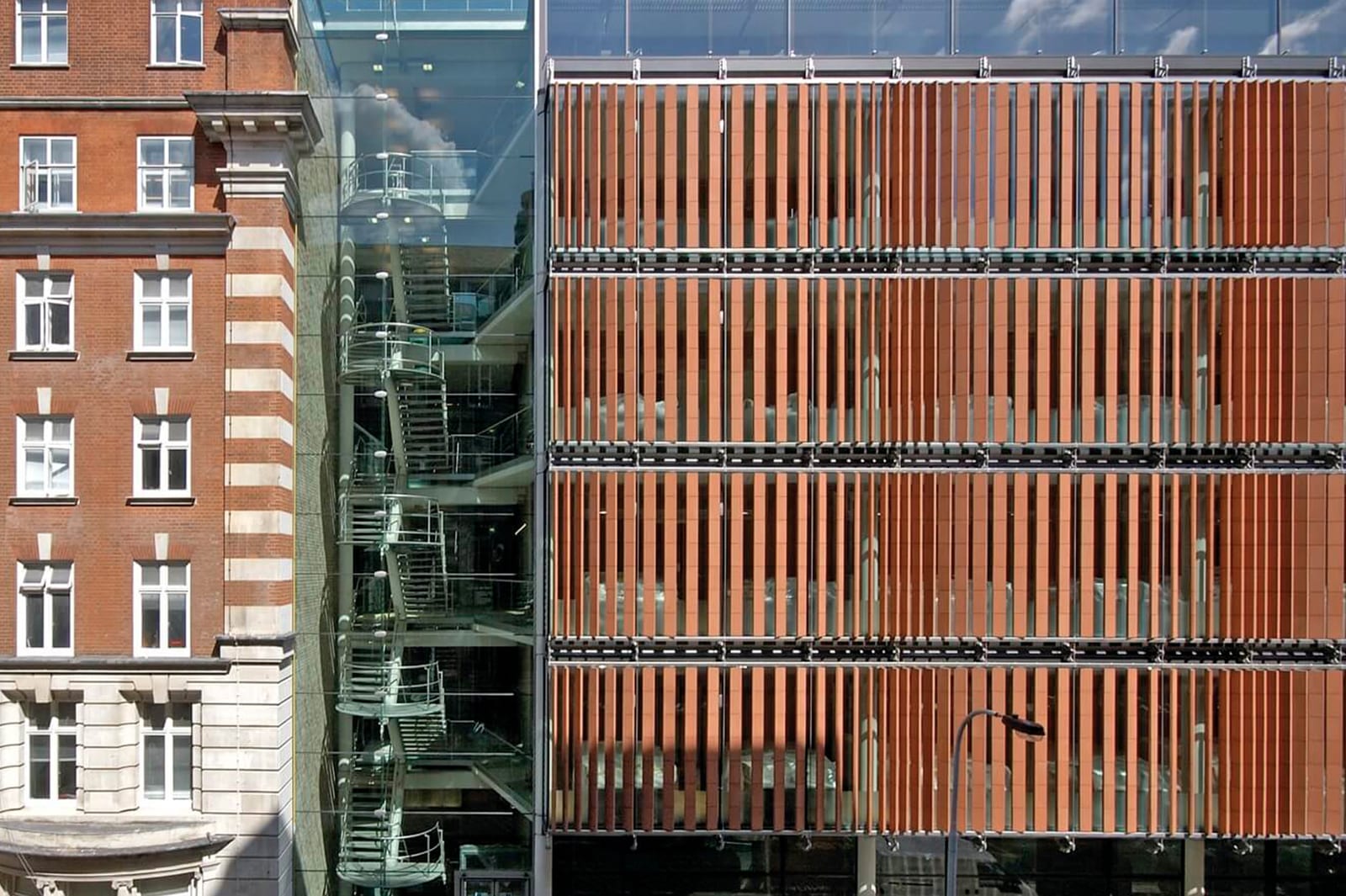UCL Cancer Institute designed by GRIMSHAW and located between the classical, red brick medical school and the new institute Paul O’Gorman at University College London, is cladded with a rhythmic, undulating terracotta.
The façade proposal was influenced by science and the study of cancer (images of cells, patterns and the chromosomes permeate the forms of the building). Therefore, the comprising of vertical terracotta blades set at varying angles to the street in front of a glazed envelope, has a rhythm that can be read as a vertical ‘bar code’ configuration or genetic sequence image. The positioning of the individual terracotta blades was determined by sunlight studies, with the intention of mitigating the negative impact of solar rays. The aim was maximising the use of natural lighting, whilst allowing views in and out of the building. Furthermore, the slender ceramic blades, have holes through the body to accommodate a stainless steel tube which holds them together. This rod acts as the stiff spine of the seven extruded segments of terracotta that make up the louvres.
These pieces resonate with the adjoining 19th century Cruciform building by Alfred Waterhouse who considered terracotta a ‘new and exciting modern material’. This is why UCL Cancer Institute of GRIMSHAW continuing this tradition of pushing the boundaries of terracotta’s use in architecture.
